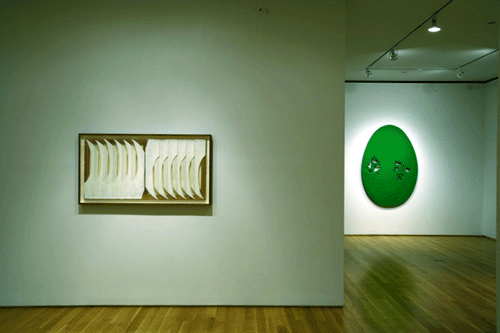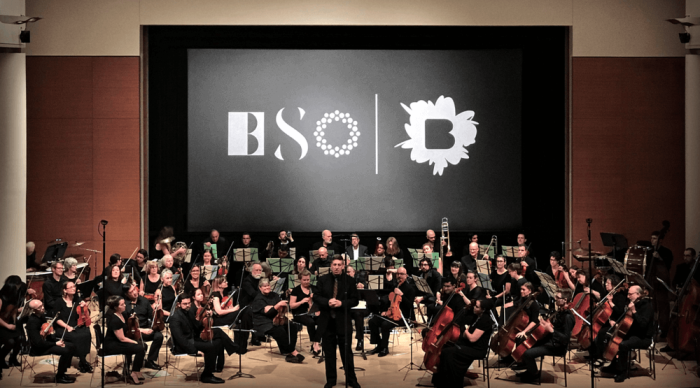Reflections on a mid-century era of Italian fresh invention
Carla Accardi and Lucio Fontana
“Infinite Space”
Sperone Westwater
415 W. 13th St.
Tue.-Sat. 10 a.m.-6 p.m.
Through Feb. 25
212-999-7337
Carla Accardi’s "Bianco" (1976) enamel on sicofoil, left, hangs along with Lucio Fontana’s "Concetto spaziale, La Fine di Dio (La Genesi)" (1963) oil on canvas, in a complimentary exhibit of the Italian artists’ works.
Two mid-century artists working in Italy inform each other’s work and look as fresh as ever. Carla Accardi, now in her 80s, is placed in the context of her colleague, the late master Lucio Fontana. Like Fontana, Accardi shows that tackling new ground can have staying power. One of the only women artists working at the time, her results are surprising and innovative and hint at many contemporary developments. Drawing inspiration from Paul Klee, Accardi uses a combination of marks that can be fluid and solid; they are language symbols. Other marks are more spatial; dry, repetitive, and filled with movement. Looking forward, Accardi sought out new materials and concepts that have influenced many in “arte povera” in Italy and on this continent as well.
An early painting, “Doppio labirinto” (1956), is sinuously tangled spaghetti of white shapes and symbols hovering in the inky infinite, a kind of graffiti tagging. Accardi’s “Bianco” (1976), the most recent work presented, is elegant and menacing. Twelve white, sickle-shaped cutouts are affixed to a wooden painting stretcher and wrapped in transparent shiny plastic. The result reveals all—structure, shape, material and supporting wall. One feels an affinity with contemporary artists Steven Parrino’s and Robert Ryman’s exploration of dematerialization. A large gouache, “A Settori” (1962), shifts palette with insets of intense color, symbols move across each in opposing hues, a precursor to David Reed and Jonathan Lasker.
While Accardi is a welcome new discovery for American audiences, Fontana is an old friend here. A large egg shaped canvas “Concetto spaziale, La Fine dei Dio (La Genesi)” (1963), florid green and object-like, looks as if it has had holes chewed though it. The openings, caked in thick impasto reveal the “free space” of the wall behind. The calm potency of the ovoid form is jarred by the violent gashes it contains.
Another standout is “Concetto Spaziale” (1960), a small canvas painted in shiny black, the zigzagged punctures forming a starscape as the light is picked up on the edges of the penetrations. One wishes this and all the framed pieces in the exhibition could be liberated and returned to their original elemental state.
The largest and latest Fontana, “Concetto Spaziale” (1965), sparkles softly. The six-foot vertical copper sheet has a gash up the center surrounded by a delicate incised line mitigating the space between exterior and opening. The piece is totemic and sexual, a masterful use of the material. Together these two artists inform and complement a spirit of fresh invention, and innovation that reflected their era in this thoughtful historical exhibition.
gaycitynews.com


































